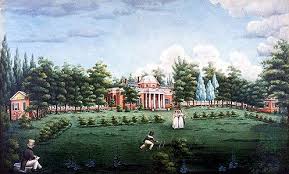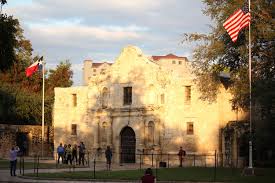The American South is home to historically significant landmarks that reflect its complex past. From colonial settlements to Civil War battlefields and civil rights monuments, these sites offer valuable insights into the region’s history. Each landmark represents pivotal moments that have shaped the nation’s history, offering valuable insights into the South’s cultural transformation.
1. Monticello – Charlottesville, Virginia

Monticello, the home of Thomas Jefferson, is a UNESCO World Heritage Site that reflects his architectural vision and intellectual pursuits. The estate includes Jefferson’s library, gardens, and slave quarters, providing insight into his life and the realities of slavery in early America.
2. The Alamo – San Antonio, Texas

The Alamo is a historic mission and battleground of the 1836 Texas Revolution, where defenders including Davy Crockett and James Bowie fought against Mexican forces. Today, it serves as a museum with exhibits on the battle and Texas’ path to independence.
3. French Quarter – New Orleans, Louisiana

Established in 1718, the French Quarter is the oldest district in New Orleans, known for its French and Spanish colonial architecture. Key sites include St. Louis Cathedral and Jackson Square, reflecting the city’s diverse cultural influences and historical significance.
4. Gettysburg National Military Park – Gettysburg, Pennsylvania

The Battle of Gettysburg marked a decisive shift in the Civil War. Today, the site preserves battlefields, monuments, and the location where President Lincoln delivered the Gettysburg Address, emphasizing its historical significance. Visitors can explore the extensive museum and learn about the war’s impact on the nation.
5. Fort Sumter – Charleston, South Carolina
Fort Sumter marks the start of the Civil War, where the first shots were fired in 1861. Accessible by boat, the site features well-preserved fortifications and exhibits detailing the conflict’s origins and early battles.
6. Martin Luther King Jr. National Historical Park – Atlanta, Georgia
This park includes Martin Luther King Jr.’s childhood home, Ebenezer Baptist Church, and The King Center. It highlights his leadership in the Civil Rights Movement and his lasting impact on social justice.
7. Graceland – Memphis, Tennessee
Graceland, the former home of Elvis Presley, is a key site in music history. Visitors can tour the mansion, see Presley’s memorabilia, and learn about his influence on American culture.
8. St. Augustine – Florida
Founded in 1565, St. Augustine is the oldest European settlement in the U.S. Its historic sites include Castillo de San Marcos, a 17th-century fortress, and St. George Street, showcasing Spanish colonial history.
9. Vicksburg National Military Park – Vicksburg, Mississippi
Vicksburg was a crucial site in the Civil War, where Union forces besieged the city. The park includes trenches, artillery, and the USS Cairo, providing a detailed look at wartime strategy and its effects on the region.
10. The Biltmore Estate – Asheville, North Carolina
Built by George Washington Vanderbilt II, the Biltmore Estate stands as the largest privately owned home in the U.S., surpassing similar estates in architectural grandeur and historical significance. It features 250 rooms, extensive gardens, and a winery, offering a look into the Gilded Age’s architectural and economic landscape.
To purchase any Official NASCA® Apparel, you can check our collections
Conclusion
The South’s historic landmarks preserve key moments in American history, from colonial expansion to the Civil Rights Movement. These sites provide educational value and a deeper understanding of the region’s past, making them essential destinations for those interested in history and culture.
